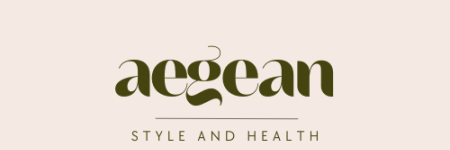Oh No Mastitis
Mastitis: A Common Issue During Breastfeeding
What is Mastitis?
Mastitis is an inflammation of the breast tissue, typically occurring during breastfeeding. It usually develops due to blocked milk ducts or an infection. Mastitis can be quite uncomfortable and painful for mothers, but it can be managed with proper treatment.
What are the Symptoms of Mastitis?
The symptoms of mastitis often appear suddenly and may include:
- Breast Tenderness: Pain and sensitivity in the breast, increased sensitivity to touch.
- Redness and Swelling: Redness and swelling in the breast, increased warmth.
- Fever: High fever and chills.
- Fatigue: General weakness and tiredness.
- Decreased Milk Flow: Reduced milk flow in the affected breast.
What Causes Mastitis?
Mastitis typically arises from the following causes:
- Blocked Milk Ducts: Accumulation and blockage in the milk ducts can create an environment conducive to bacterial growth.
- Bacterial Infection: Bacteria can enter through cracks or wounds on the nipple, leading to infection.
- Incomplete Emptying: Incomplete emptying of the breast during breastfeeding can lead to milk buildup and blockage.
As someone diagnosed with hyperlactation and experiencing recurrent mastitis, I feel compelled to share my experiences. I have read numerous articles and tried countless methods. Yes, I have endured a lot of pain, but I eventually managed to control this condition. I feel for any mother experiencing breast pain while breastfeeding.
How is Mastitis Treated?
Several methods can be employed to treat mastitis:
- Continue Breastfeeding: Continuing to breastfeed helps empty the milk ducts and prevents the spread of infection. Breastfeed from the affected breast frequently (even though it may be painful).
- Rest and Hydration: Drinking plenty of fluids and resting helps the body fight the infection.
- Hot and Cold Compresses: Hot compresses can help open milk ducts. Apply hot compresses before breastfeeding. Cold compresses can reduce pain and swelling and should be applied after breastfeeding.
- Antibiotics: Your doctor may prescribe antibiotics in case of bacterial infection. It’s important to complete the antibiotic treatment.
- Pain Relievers: Pain relievers such as paracetamol or ibuprofen can help reduce pain and fever.
Tips to Prevent Mastitis:
- Correct Breastfeeding Technique: Ensuring the baby latches on correctly prevents nipple cracks.
- Frequent Breastfeeding: Frequently and completely emptying the breast prevents milk duct blockage.
- Hygiene: Keeping your hands and nipples clean reduces the risk of infection.
- Comfortable Clothing: Avoiding tight bras or clothing helps keep the breast tissue comfortable.
- Quit Smoking: Smoking cessation is important.
- Use Probiotics: Consider using probiotics.
- Silver Caps: Silver caps were my best friends during this period. I used them before and after breastfeeding throughout the day. I removed them while sleeping, as it’s important for the nipples to get air and not be constantly covered.
Natural Remedies for Mastitis
I will tell you about the products I have used during my lifetime, but please talk to your doctor before using them.
Homeopathic Remedies:
- Belladonna 30c: Take at the first sign of infection, as recommended on the bottle, usually every 3-4 hours until symptoms significantly improve.
- Phytolacca 30c: If symptoms have not improved after 5 doses, follow the same protocol as above. These remedies are believed to be safe for both mom and baby because zero side effects have been recorded.
Raw Garlic:
I used this method very often. Eat raw cloves 2-3 times a day, chopped into small pills and swallowed whole. Garlic is an incredible antibiotic that is very effective against infection, making it highly effective for mastitis.
Lecithin Supplement:
A helpful aid when your breast is blocked. I used it a maximum of twice a day.
Cabbage:
Wash cabbage leaves thoroughly and place them in the freezer. When breast pain starts, take them out and apply them cold to your breast. The sulfur content helps fight mastitis.
Conclusion
Mastitis is a common issue that many mothers face during breastfeeding. However, it can be managed with proper treatment and precautions. Recognizing the symptoms early and taking the necessary steps is crucial for the health of both the mother and the baby. If you experience symptoms of mastitis, consulting a healthcare professional is the best course of action.
